Product Conditions
- Customer Returns
- New Overstocks & Master Cases
- Shelf Pulls
- Defective & Irregulars
- Tested Working & Refurbished
- Pre-Worn
Customer Returns
What are Customer Returns?
Customer Returns are items that were once sold by a store (or website) and were later returned by the consumer in varying conditions.
Stores have varying return and product liquidation policies which affect the type & condition of products you see in varying loads. Customer return loads may include a significant percentage of new shelf-pull or overstock merchandise, but Via Trading will always label these listings as “Customer Returns.”
Customer Returns can include:



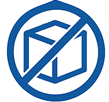


The majority of customer return goods undergo a cursory visual check before making their way into a return load. Higher value items may undergo closer inspection before liquidation.
Customer Returns can have the following conditions:







Customer Return Loads - Product Quality
The general “quality” of customer return loads can vary significantly from program to program and it is common that some programs have a 50% or greater Defective rate while others are only 10% or 20%.
Understanding How Working Percentages Can Impact Your Bottom Line
Working percentage definitions vary based on the category of goods. Often, "working percentage" of products refers to the "salable percentage" of the load. As a general guideline, the industry average for customer return loads breaks down roughly as follows:
This would be the percentage of products that can be resold in some way
This would be the percentage of products that one can repair or recondition to a salable status
The rest is the portion that can be used to repair other items in the lot, sold as scrap, or thrown away
These numbers are a reference for common purchases, see each listing for accurate details.
Working Percentage Example: If a 6-piece cookware set is missing one pan, some label it as “not working” or “defective,” but one can still recover a percentage of the product’s original value by reselling the remainder of the set
If you only want to deal with 100% retail ready items do not purchase customer returns. This is not a ‘get rich quick’ model. The payoffs are high for those prepared to work hard and put effort in their purchases in order to create the highest possible return on investment. This is a “get-rich” slowly approach with hard work, dedication & creativity. Over several purchases, most in this industry agree the payoffs & returns are very profitable and the long-term risk is generally minimal.
To Maximize your success with customer returns, be prepared to:

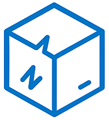

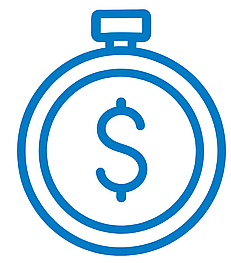
Purchasing department store returns is not for everyone.
Here are some crucial points to be aware of when it comes to purchasing Customer Returns:
Liquidators such as Via Trading operate a no returns policy with all sales final and goods sold AS-IS regardless of condition, unless otherwise stated.
There is a risk your purchases may not be profitable and this risk increases when purchasing customer returns.
Newcomers to the industry typically experience and one should expect to do much better once they have more experience with such goods.
Items are often not retail-ready and demand more research, processing, pricing, and creativity than new master case goods.
⚠️ Programs vary from store to store – please see listing descriptions and ask your Account Manager for further information on any particular listing.
Customer return goods are always sold with no warranty nor guarantee.
New OverStocks & Master Cases
What are new overstocks?
New Overstocks are items that were never exposed for sale in a retail setting though they may no longer be in their original master case or factory packaging.
New overstocks, also often referred to as Closeouts, tend to be goods which typically have never been merchandised or exposed for sale in a retail store. Such goods can materialize from retailers, importers, manufacturers, or distributors who are closing down or simply have discontinued or excess goods in their warehouse that they need to move. Via Trading also sources & offers liquidation services to freight forwarders, logistics industries, manufacturers, insurance & financial institutions, and the like. Overstock goods tend to be in 100% New Condition.
New Overstock items typically have the following characteristics:

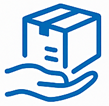


What are Master Case Goods?
Master Case goods are typically 100% new in original manufacturer’s packaging and are fully functional and complete. These goods have not been exposed for sale in any retail environment and products can be considered 100% new and retail-ready.
Wholesale master case items may have the following characteristics:




Shelf Pulls
What are Shelf pulls?
Shelf pulls are items that were already exposed for sale in a retail environment but have been “pulled” from the shelfs and chosen to be liquidated by the store. These goods are typically new and have never been used
Shelf pulls are typically excess goods that have been displayed for sale in a store or online but have never been purchased by a customer. Shelf pulls are typically considered excess inventory from store shelves. In most cases, shelf pulls require much less work than customer returns, but you should expect to inspect items, wipe off any dust, and remove price tags if needed before reselling them
Shelf pulls are often handled multiple times on their way from the store to a liquidator, so a small percentage may show signs of wear, such as light stains or minor imperfections
Shelf pulls will typically be in good selling condition and may have some or all of the following characteristics:
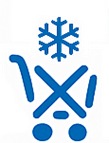





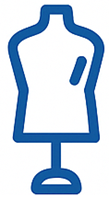

Defective and Irregulars
What are defective goods?
Via Trading will occasionally offer tested not-working or “defective” pallets or loads.
Such items are typically higher end electronics which have gone through a testing process, visually defective items, incomplete sets (like furniture, housewares, etc), items good for spare parts only, or outof dateout-of-date items. Defective goods have the potential to be profitable if you have the ability to repair or strip them of their parts for resale.
Defective Goods may have the following characteristics:




What are Irregulars?
Irregulars (depending on commodity also referred to as Scratch And Dent) are generally new products that are being discarded or liquidated due to improper or defective manufacturing. In some cases this term is also used to describe Furniture or Large Appliances which may have some scratch and dents but are otherwise fully functional.
They can also be called “imperfect goods”. In most cases, irregular items have very small manufacturing defects such as the wrong color thread, improper stitching, slight discoloration from the intended item’s color, other minor blemishes, scratches, dents, discoloration or other imperfections.
Irregular items may have the following characteristics:




Tested-Working Goods and Refurbished Goods
What are Tested-Working Goods?
Via Trading will occasionally offer items that have gone through a testing process and are deemed functional or “tested-working.” These items may be a mix of overstocks, shelf pulls, and customer returns. Typically, these are higher end, more expensive units.
Tested-Working Goods may have the following characteristics:





What are Refurbished Goods?
Via Trading also offers “refurbished” goods for sale on a periodic basis. Refurbished goods are items that have gone through a process to test and restore the items to their original working condition.
Often these items are repackaged in generic boxes and may not include all the items found in the original manufacturer’s packaging.
Refurbished goods may have the following characteristics:




Pre-Worn
What are Pre-Worn Goods?
Via Trading periodically offers a pre-worn (used) clothing. These goods can come from a range of sources and are available year-round. Our pre-worn goods go through an inspection process to ensure quality control and offer tremendous value for money for the right market.
Pre-worn goods may have the following characteristics:





